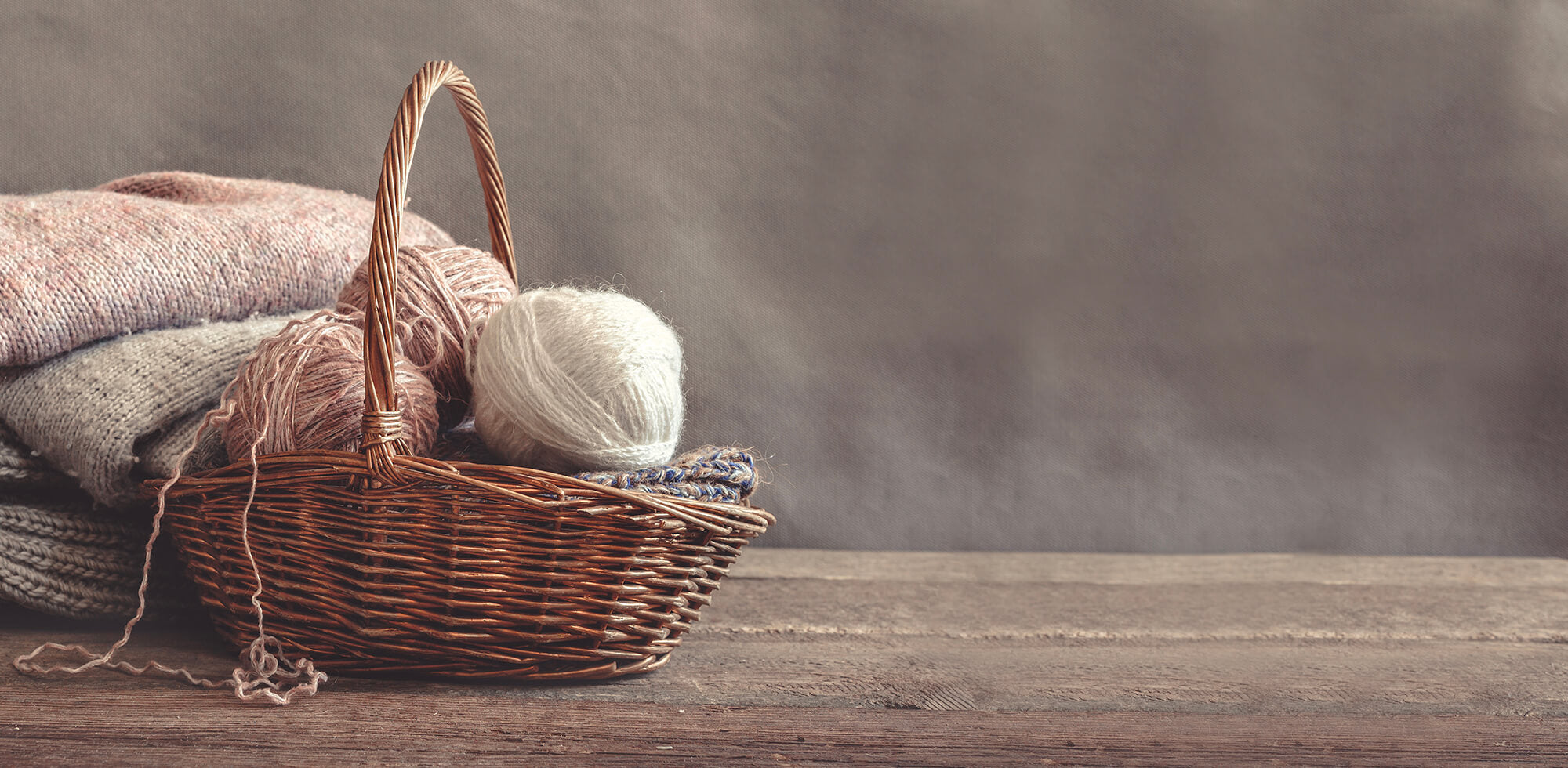By Claudia Ostrop
Pilling is an annoying phenomenon with knitted garments. The small knots that form on the knitted fabric quickly make a pullover or cardigan look old. Today, we want to explain how pilling occurs, why it is not a sign of poor quality and what you can do about it.
What Is Pilling?
Pilling is the formation of fuzzy balls of lint on fabric. The round little "pills" are tangled fluff that form due to abrasion. Although pilling can happen with cotton as well as with synthetic fibres, we are particularly interested in pilling in knitwear made with wool.
How Does Pilling Occur?
Pilling is caused by friction. Lint and fluff that protrude from the knitted fabric are tangled together by rubbing or abrasion forming small balls, also known as pills. That's why the annoying nodules are mostly found in the areas that are particularly exposed to friction: on the forearms and elbows, the armpits and hips. Carrying shoulder bags or backpacks can also cause them: Friction occurs where the straps rest or the bag moves back and forth on the body resulting in the formation of pills.
Theoretically, pilling can also occur during washing, despite the fact that we wash our knitwear either by hand or on the gentle wool program of the washing machine.
Pilling Is Not a Sign of Poor Quality
To get straight to the point: pilling in knitwear is not necessarily an indication of the inferior quality of the wool used. Of course, it's super annoying when the nodules quickly make a new pullover or cardigan look old and worn. But that doesn't automatically have anything to do with whether the wool used was good or bad, expensive or cheap.
The reason why some pieces of knitting pill very badly and others less is due to the fibre used. With a loosely spun wool, the fibres are only loosely connected to each other. The surface of the strand is correspondingly “open” and a relatively large number of fibre ends stick out. In the event of friction, these can easily become tangled, and because the fibre structure is relatively loose, other fibres can also be pulled out. At worst, this causes rather large pills.
A yarn that is twisted very tightly like a classic sock yarn, is far less prone to pilling, since the fibres are in a very stable bond.
The softer and less twisted a yarn used is and the shorter the staple, the more susceptible a knitted item is to the annoying formation of pills. Particularly fine, soft fibres are simply more likely to become loose and shed.
The fibre length is important for good yarn quality: if the fibres are too short or of different lengths, they cannot be spun cleanly or cannot stick together well. The longer the individual fibre, the “safer” it is in the strand of yarn.
Fibres that are naturally particularly soft and relatively short, such as cashmere, are therefore more prone to pilling. For this reason, we use the best fibre quality for our yarns so that high-quality products can be made with them.
Unfortunately, pilling is practically pre-programmed with recycled yarns: By processing fibre waste, i.e. very short and irregular fibre sections, consumers can be offered supposedly inexpensive yarns. But usually the opposite is the case: if you find out after a very short time that a pullover or cardigan is covered all over with pills or is even completely pilled in the sensitive areas, the joy is short-lived.
Prevent Pilling
The bad news is that you can't really prevent pilling. However, you can avoid foreseeable frustration by choosing the right wool: Untwisted wool gives more (long-term) pleasure with accessories such as scarves, shawls or hats because friction is simply much lower here than with a cardigan or sweater.
Accordingly, twisted yarns or so-called worsted yarns should be used for garments that are exposed to higher wear and tear. In the latter, the fibres are combed before spinning so that they point in one direction. The yarn is less soft and fluffy, but the surface is very smooth which in turn helps prevent pilling.
If you are knitting with wool that, due to its nature, would tend to pill, it is better to choose a smaller needle size: If the knitted fabric is a little firmer or more stable, this prevents the friction of loose stitches when worn.
Removing Pilling
The good news is that you can get rid of those annoying knots so that even a garment prone to pilling can always be presented in its full beauty.
If you discover the first knots and lumps on the garment: Please DO NOT give in to the reflex of plucking them off with your fingers! Pulling off the pills removes them, but at the same time, pulls more fibres out of the knitted fabric. So, it's only a matter of time before the next pill will form.
If there are only a few pills that have formed, you can carefully cut them off with sharp (!) scissors. But be careful not to accidentally cut a hole in the fabric!
Much better suited are special lint razors or combs, with which the pills can be cut off cleanly and quickly.
There are battery-powered razors that don't cost the earth, but reliably cut these unsightly balls from the surface of a piece of knitwear. You can also use a wool comb like the one offered in the Pascuali range, which easily removes pilling with its metal shaving head.

Whether razor or comb - in both cases it is best to lay the garment flat on a table and shave or comb over the affected areas. Do it carefully making sure that only the knots are removed and the knitted fabric is not thinned out.
There are numerous other tips circulating on the Internet on how and with what to get rid of pilling. Some of this is better viewed with a little healthy scepticism! Lint rollers and adhesive tape are not recommended because with luck they can remove the knots tearing them off which is of particular benefit to the felting offspring! Lint or (anti-)pilling stones are mostly made of lava rock (reminiscent of pumice stones for removing calluses). With them, nodules should disappear when you rub the knitted fabric. And because there is rubbing, this will create more pilling. The advice to tackle pilling with a disposable razor may work in an absolute emergency. But to go with open blades over a pullover or cardigan requires a certain daring...
It remains to be seen whether freezing a knitted garment really helps against pilling. Washing with silicone shampoo or hair conditioner is also described as the solution on some websites. But maybe it´s better not to experiment too wildly.
Our recommendation: examine your knitted garments regularly and don't wait until the entire piece is full of big lumps. If you use a wool comb or lint razor regularly and early on, you will see results very quickly and the beauty treatment will be short lived. With little investment of time, your self-knitted treasures will remain as beautiful as they were on the first day!



